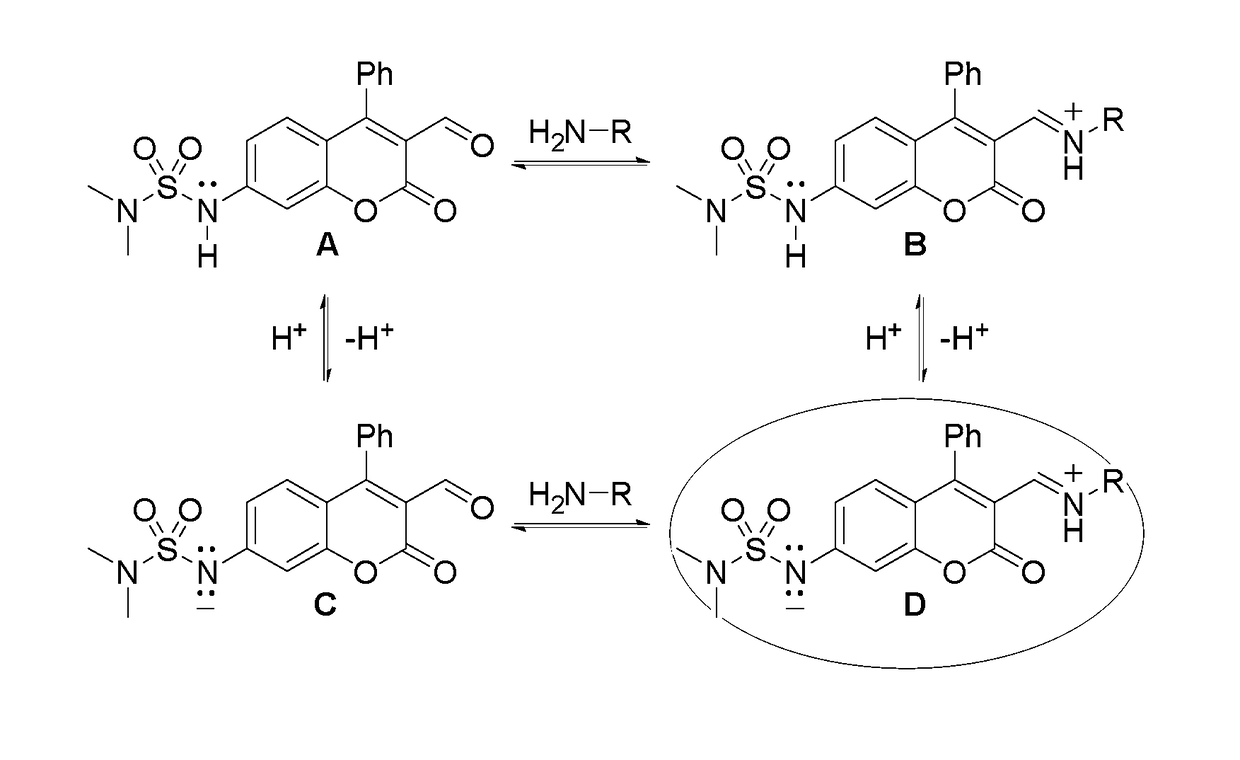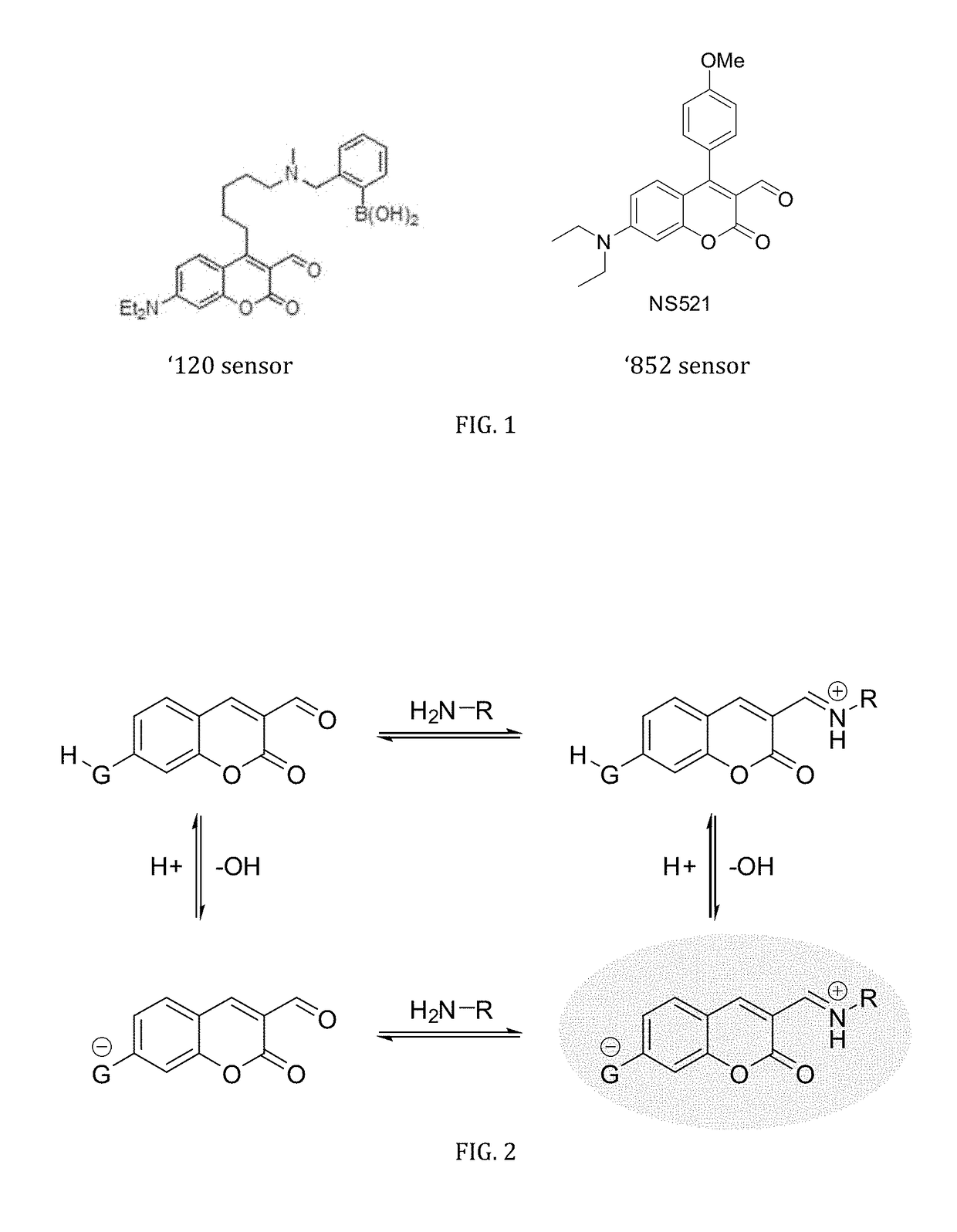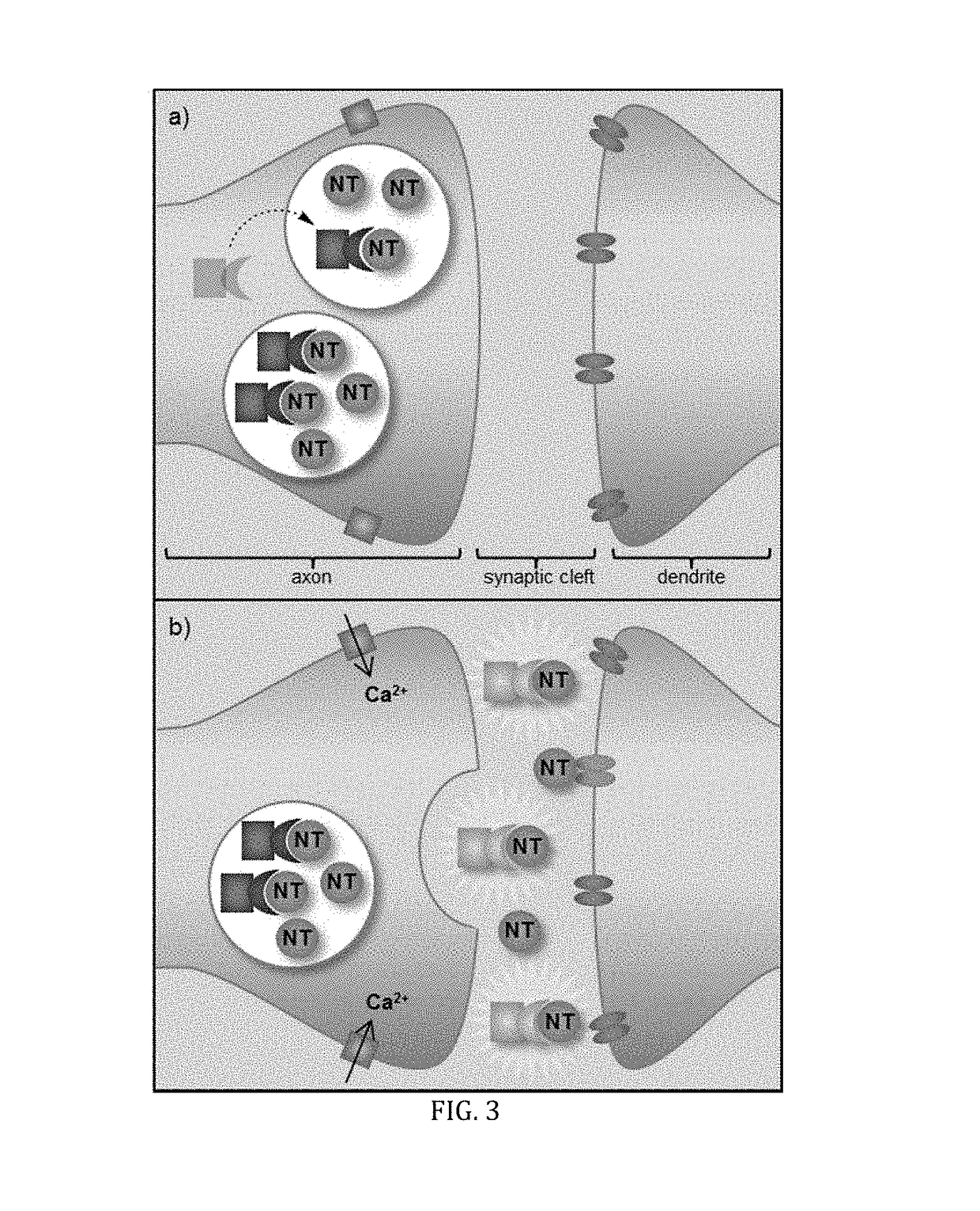pH-sensitive fluorescent sensors for biological amines
a fluorescent sensor and biological amine technology, applied in biological testing, material testing goods, organic chemistry, etc., can solve the problems of lack of spatial resolution, poor throughput, and limited non-optical techniques
- Summary
- Abstract
- Description
- Claims
- Application Information
AI Technical Summary
Benefits of technology
Problems solved by technology
Method used
Image
Examples
example 1
of ES517
[0058]Compound 1 (465 mg, 1.746 mmol) and N-phenyltriflimide (686 mg, 1.921 mmol) were combined in a round bottom flask. THF (24 mL) was added and then DIPEA was added dropwise (0.38 mL, 2.270 mmol). The mixture stirred at ambient temperature for 3 h followed by removal of the solvent in vacuo. The residue was purified by chromatography (95:5 CH2Cl2 / EtOAc) to yield Compound 2 (607.2 mg, 87%) as a golden oil: 1H NMR (500 MHz, CDCl3) δ 9.95 (s, 1H), 7.56-7.62 (m, 3H), 7.33-7.37 (m, 2H), 7.29-7.32 (m, 2H), 7.16 (dd, 1H, J=9.0, 2.5 Hz); 13C NMR (125 MHz, CDCl3) δ 187.5, 159.5, 157.1, 155.0, 152.6, 131.4, 130.8, 130.3, 129.0, 128.4, 119.9, 119.7 (q, C—F, J=40 Hz), 118.0, 117.3, 110.6; IR (neat, cm−1) 1765, 1605, 1552, 1422, 1364, 1217, 1136, 1107, 980; HRMS calculated for C17H9F3O6SNa (M+Na+): 420.9964. Found: 420.9961.
[0059]Compound 2 (123 mg, 0.309 mmol) was combined with N,N-dimethylsulfamide (42 mg, 0.340 mmol), Pd2dba3 (14 mg, 0.015 mmol), SPhos (18 mg, 0.046 mmol), and K3PO...
example 2
opic Property Studies of ES517
[0060]FIG. 6 shows results of initial binding studies performed by titrating ES517 with glutamate and exciting at 488 nm, a region that is sufficiently red to prohibit absorbance and subsequent emission from the unbound sensor. A 12-fold fluorescence enhancement was obtained upon binding to glutamate though with a low binding constant (Ka=8.6 M−1). While low, this binding constant is believed to be preferred for reversible binding due to the high millimolar concentration of glutamate in a vesicle (˜300 mM).
[0061]FIG. 7 shows the tests of the pKa of the bound sensor. ES517 was saturated with glutamate and the spectroscopic properties measured over a wide pH range. The protonated form of the bound sensor (FIG. 4, structure B) absorbed at 368 nm. Upon deprotonation, two bands were observed at 428 and 458 nm. The 428 nm band was assigned to the unbound deprotonated form of the sensor (structure C). The 458 nm band therefore represents the bound, deprotonate...
PUM
| Property | Measurement | Unit |
|---|---|---|
| pKa | aaaaa | aaaaa |
| pH | aaaaa | aaaaa |
| pKa | aaaaa | aaaaa |
Abstract
Description
Claims
Application Information
 Login to View More
Login to View More - R&D
- Intellectual Property
- Life Sciences
- Materials
- Tech Scout
- Unparalleled Data Quality
- Higher Quality Content
- 60% Fewer Hallucinations
Browse by: Latest US Patents, China's latest patents, Technical Efficacy Thesaurus, Application Domain, Technology Topic, Popular Technical Reports.
© 2025 PatSnap. All rights reserved.Legal|Privacy policy|Modern Slavery Act Transparency Statement|Sitemap|About US| Contact US: help@patsnap.com



